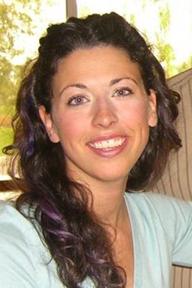CIRCL perspectives offer a window into the different worlds of various stakeholders in the cyberlearning community — what drives their work, what they need to be successful, and what they think the community should be doing. Share your perspective.
Amy Ogan is an Assistant Professor in the Human-Computer Interaction Institute at Carnegie Mellon University.
How did you get started in cyberlearning?
My path into cyberlearning happened in a very roundabout way. My background is in computer science, Spanish, and human-computer interaction. The moment of inspiration happened as an undergraduate student when I was participating in a study abroad program in Spain. My new friends asked me, “What are Americans really like?” I was struck with this idea that we are constantly exporting culturally-situated materials like TV, movies, and songs, but that it’s really hard for people to understand the deeper cultural meanings and values of the material. It’s even harder to thrive when you have to go to live or work in a new environment.
As I realized the disconnect between our products and our culture, it inspired me to start designing simulation environments that students could use to practice intercultural communication skills. For example, I worked on a project called BiLat, developed at USC’s Institute for Creative Technologies, with virtual characters used to support Americans practicing interactions in relationship-building situations in Iraq (which can be quite difficult for us!). I am also currently working on a system, called RaiseYourHand, to help international students in the United States become better teaching assistants. American classrooms often have quite different learning and teaching practices than the ones these international students grew up in, so this system will help prepare them to better connect to the students in an American classroom, and better support their learning.
What makes you wake up every morning and want to work?
I’m a new assistant professor at Carnegie Mellon University and I really love what I do! Partly because I get so excited by the idea of introducing students to new cultures and helping them understand what makes people tick. In 1990 only 3% of Americans had passports. Now, in 2014, almost one third of Americans do. A dream of mine is for every student in the United States to have the opportunity to visit a new place, and to learn about different ways that people live. Hopefully at the same time, students will increase their trust, respect, and understanding of people around the world. It’s exciting for the students, but also for myself! I get the chance to travel, interact with new people and places, and to learn as well.
What would you like technology developers to know about your work?
I would like to see developers working towards making American-made technologies more culturally aware. I do a lot of travel to investigate how educational technologies like personalized digital learning systems might be made to function in a really productive and engaging way in other places. In an internet-connected world, we are beginning to export our educational technologies globally, and as we do so, we are implicitly saying that “this” is the right way of teaching or learning, even if that assumption does not hold in all contexts. For example, a common assumption is that technologies designed to support one laptop or tablet per student is ideal, but in my international work I have seen many cases where students will abandon half of the devices in the room in order to work extremely collaboratively together, in a very natural and productive way.
I hope developers will think deeply about the assumptions they are baking into the systems they are creating and deploying, and build in opportunities for students and teachers who learn best with different practices to be able to make these technologies as productive as possible for students around the world. I believe that cyberlearning has the potential to meet so many educational needs for all kinds of learners!
How would you like to contribute back to the cyberlearning community?
I would love to help increase the dialogue between teachers and developers. It’s important to give teachers an outlet to talk about their own teaching and learning practices, and what works for their students. This knowledge would help us push the limits of what we can achieve with cyberlearning, and our understanding of how to address populations with unique needs. Additionally, I would like my work to bring awareness of the importance of social aspects of our technologies, such as an ability to build lasting relationships with students just as a teacher or tutor would. For example, when friends working on a math problem correct one another, we often observe joking and teasing, which softens and even facilitates the process of productive cognitive conflict. I believe that such relationships could also be created between the technology and the student, and I’d like to help the community keep a sense of fun and lightness in our work – which I think could be good for researchers, developers, and students alike!

